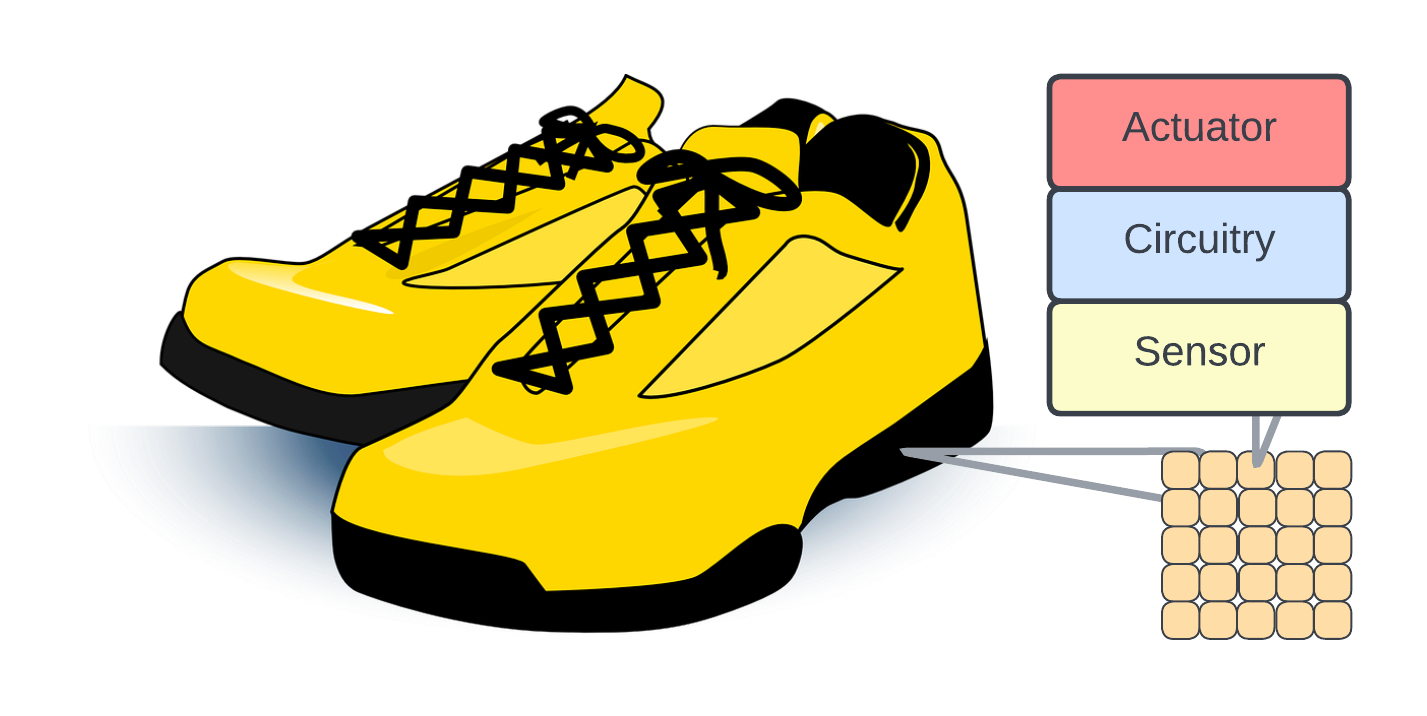Project: Shock absorbing Shoes

Smart Insoles for Shock Absorption
Working under Prof Sachin Belgamwar, from September 2022 - Dec 2022,
Course project: Introduction to MEMS
Teammate: Pranay Venkatesh
Abstract:
The design and mass manufacturing of smart soles in sports shoes is a highly constrained design problem. There is only a 1 cm portion that tapers in size and under 50 grams of mass to work with. With such scarce resources, this project aims to design a shock absorber system for the comfort and safety of athletes. For this, we must meet the sensing, actuating, circuitry and power requirements in the room we have to work with.
This study uses a grid of cells made of smart materials to implement the shock-absorbing system. Each grid cell comprises a pressure sensor, signal conditioning circuitry and a mechanical actuator. Several options for the individual elements are to be considered and experimented with. The potential fabrication and manufacturing challenges involved are also discussed in this study.
The study considers piezoresistive and piezoelectric pressure sensors to compute the extent of stress applied at a local point in the sole. One possible candidate material to introduce damping is electrorheological fluids. The increased viscosity of the fluid under the application of an electric field would allow for one potential damping mechanism. Another possible candidate for damping the system is electroactive polymers. Specially engineered polymers could match the sensitivity requirements for the smart sole.
Some of the challenges we expect to face as a design constraint include packaging, fabrication and manufacturing. Packaging comes up as one of the primary issues since the sole has to be thin, light, flexible and comfortable. Furthermore, a 3D integration scheme is required. The sensing element needs to be at the bottom of the stack so as to sense the pressure from the impact better. Then comes a layer of circuitry, comprising signal conditioning and drive circuitry, and the corresponding power rails. The signal conditioning circuitry must be atop the sensor and simultaneously wired to it. The drive circuitry must be beneath the actuating smart materials but also connected to it. Lastly, an outer gel covering must be present as present in normal sports footwear.
Our approach to tackling this problem is to first design a single cell of the system. By varying the size and the nature of the material used within it, we hope to simulate the stretching and compressing properties of a single cell in all three directions. Once we have come up with an optimum design for a single cell, we would simulate clusters of cells to observe how the sole could respond locally to pressure applied at a point. From there, we hope to explore potential simulations of the entire smart sole. The expected outcome of this project is a potential design and manufacturing plan for the smart sole, required properties for the gel or material required and a critical analysis of the system and its response to stimuli.
